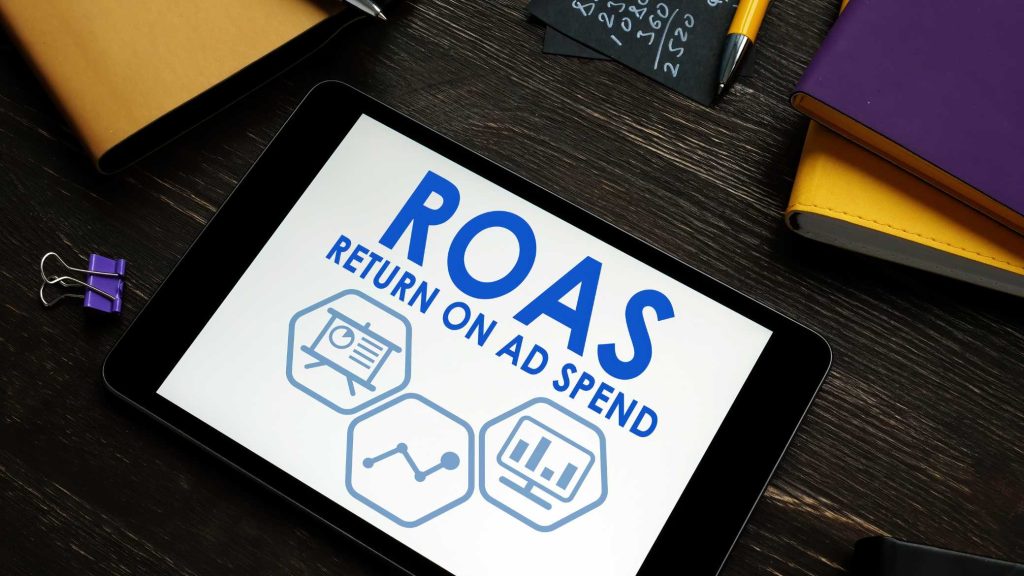What is ROAS: In the ever-evolving world of digital marketing, success is no longer measured by vague indicators like brand awareness alone. Instead, marketers are now hyper-focused on measurable, performance-driven outcomes. One such vital metric is ROAS, or Return on Ad Spend. In 2025, as advertising costs rise and competition stiffens, understanding ROAS and optimizing it becomes a cornerstone of any successful digital marketing strategy. ROAS is the lifeline of performance marketing—it directly links the amount spent on advertising to the revenue generated. This complete guide explores what ROAS means, why it matters in 2025, and how digital marketers can drastically improve it to maximize profitability and growth.
Table of Contents
What is ROAS? Understanding Return on Ad Spend

ROAS, short for Return on Ad Spend, is a marketing metric that measures the revenue earned for every dollar spent on advertising. It is calculated using the simple formula:
ROAS = Revenue from Ads / Cost of Ads
For example, if a company earns ₹50,000 in sales from a campaign that cost ₹10,000 to run, the ROAS would be 5:1 or simply 5. This means for every rupee spent, ₹5 was earned in return. ROAS is often expressed either as a ratio (5:1) or a percentage (500%). It helps marketers understand the efficiency of their ad spend and allows them to determine which campaigns are profitable and which are not.
Why ROAS is Critical for Digital Marketers in 2025
In 2025, digital marketing is hyper-competitive. Platforms like G Ads, Meta Ads and programmatic advertising channels are saturated with businesses of all sizes. Moreover, customer acquisition costs (CAC) are increasing, privacy policies are limiting data access, and machine learning is reshaping targeting capabilities. In this scenario, measuring your ROAS is no longer optional—it’s essential.
ROAS provides clear, actionable insights into how well your marketing budget is performing. It helps answer key questions like:
- Which campaigns are generating real revenue?
- Which audiences are most profitable?
- Are your marketing strategies sustainable?
Also Read: How to Use Reddit & Quora for Digital Marketing – Comprehensive Guide 2025
High ROAS means better profitability, while low ROAS flags inefficiencies in targeting, creatives, bidding strategies, or landing pages.
How ROAS Differs from ROI (Return on Investment)
Many marketers confuse ROAS with ROI, but they are not the same. ROAS measures revenue compared to ad spend, while ROI considers profit compared to the total investment (which includes ad spend, product costs, fulfillment, etc.). ROI gives a broader financial picture, whereas ROAS is specifically tied to ad campaign performance. In performance marketing, ROAS is often a more immediate and trackable metric for decision-making.
Benchmarks: What is a Good ROAS in 2025?
What qualifies as a “good” ROAS can vary depending on the industry, business model, and goals. However, general benchmarks in 2025 are as follows:
- E-commerce: 4:1 to 6:1 is considered healthy
- Subscription Services: 3:1 or higher
- B2B SaaS: 5:1 to 8:1 due to longer sales cycles
- Lead Generation: 3:1 or more depending on lead quality
It’s also important to evaluate ROAS alongside other metrics like customer lifetime value (CLTV), customer acquisition cost (CAC), and average order value (AOV).
High-Impact Strategies to Improve ROAS in 2025

- Refine Your Target Audience with AI-Driven Segmentation
Advanced audience segmentation tools powered by AI can analyze purchasing behaviors, engagement patterns, and demographic data to build high-converting audience clusters. Instead of broad targeting, use predictive analytics to focus on micro-segments with a higher likelihood of conversion. - Leverage High-Converting Creatives and Ad Formats
Ad fatigue is real in 2025. Static images and generic messages no longer perform. Marketers should use dynamic creative optimization (DCO) and personalize visuals, copy, and CTAs based on user intent and behavior. Experiment with short-form videos, interactive carousels, shoppable posts, and native ads to increase engagement. - Optimize Your Landing Pages for Conversions
Driving traffic is only part of the equation. If your landing page doesn’t convert, ROAS will suffer. In 2025, high-performing landing pages are fast-loading, mobile-optimized, contextually relevant to the ad, and frictionless in the conversion process. Use A/B testing and heatmaps to optimize design, headlines, form fields, and CTA placements. - Use Conversion APIs and Server-Side Tracking
With browser tracking limitations due to privacy changes like iOS 17 and GDPR regulations, relying on traditional pixel tracking is no longer reliable. Integrate Conversion APIs (Meta CAPI, G Enhanced Conversions) and server-side tracking to improve attribution accuracy and regain lost data. - Implement Smart Bidding and Budget Allocation Tools
ROAS-based automated bidding strategies are more effective in 2025 due to improved machine learning models. Platforms like G Ads offer “Target ROAS” bidding that adjusts bids in real-time based on predicted value. Use performance-based budget allocation across channels to maximize ROAS holistically. - Analyze Cross-Channel Attribution
Multi-touch attribution models help you understand how different channels contribute to conversions. Use tools like G Analytics 4 and marketing attribution platforms to determine which touchpoints drive value, and redistribute budget accordingly to improve overall ROAS. - Retarget Warm Audiences Strategically
Remarketing to users who interacted with your brand but didn’t convert is cheaper and more effective than cold outreach. Use intent-based signals to serve personalized offers, abandoned cart reminders, and dynamic product ads. Retargeting in 2025 should be based on behavioral segmentation rather than simple page visits. - Focus on Customer Lifetime Value (CLTV) for Smarter Decisions
Instead of just looking at first-purchase ROAS, shift your mindset to long-term value. A lower initial ROAS may still be profitable if the CLTV is high. Use data-driven models to predict lifetime value and adjust ad spend based on projected returns. - Incorporate Influencer and UGC Marketing
Influencer marketing and user-generated content (UGC) are powerful in improving ROAS due to their authenticity and higher trust factor. Partner with micro-influencers and repurpose UGC in paid campaigns to drive better engagement and conversion. - Run Seasonal and Flash Sale Campaigns
ROAS often peaks during limited-time offers and seasonal promotions. Create urgency with time-bound campaigns, exclusive deals, or festive discounts. Combine this with precise ad scheduling and geo-targeting for hyper-personalized campaigns.
Top ROAS Tools and Platforms for 2025
- G Ads Target ROAS Bidding
- Meta Ads Manager with Conversion API Integration
- Triple Whale for E-commerce ROAS Tracking
- Hyros for Attribution and Cross-Channel Optimization
- G Analytics 4 with Predictive Modeling
- Northbeam, Segmetrics, and Wicked Reports for B2B Attribution
Buy Now : Professional Digital Marketing Course
These tools help in tracking, optimizing, and forecasting ROAS across multiple channels and user journeys.
Common Mistakes That Kill ROAS in 2025
- Targeting too broad or irrelevant audiences
- Ignoring mobile-first design in ads and landing pages
- Using the same creative assets across platforms
- Underestimating the impact of slow website speed
- Not integrating first-party and server-side data
- Over-relying on last-click attribution
Avoiding these pitfalls can preserve budget and improve your campaign efficiency significantly.
Conclusion: ROAS is the Metric That Drives Growth in 2025

In 2025, ROAS isn’t just a number—it’s a roadmap to profitability. As ad platforms grow more intelligent and consumer behavior becomes more dynamic, digital marketers must evolve their strategies to meet the new standards of performance. By focusing on data, user experience, creative experimentation, and advanced attribution, marketers can not only improve their ROAS but also scale campaigns confidently and sustainably. Whether you’re running ads for e-commerce, SaaS, or service-based businesses, understanding and optimizing ROAS should be your north star in the digital landscape.
Disclaimer: This content is for informational purposes only. Marketing outcomes can vary based on industry, competition, budget, and platform algorithm changes. Always test strategies based on your specific business objectives.
Keywords: What is ROAS, What is ROAS now, What is ROAS 2025, What is ROAS, What is ROAS today








